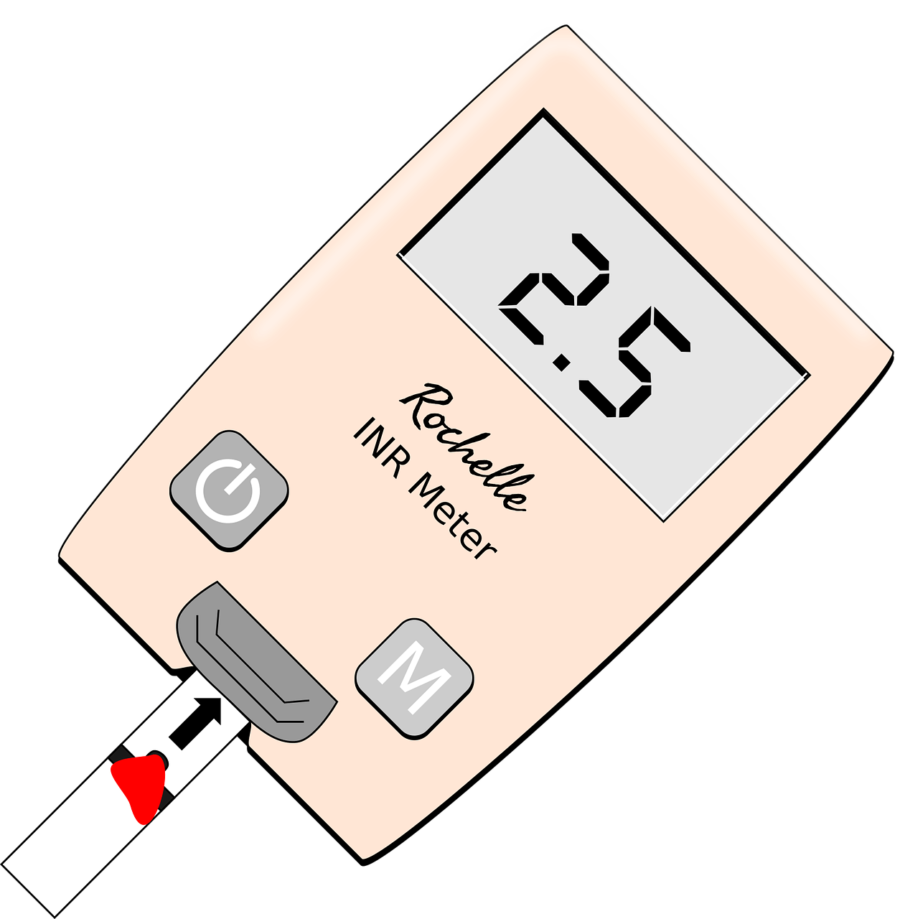
The International Normalized Ratio is an essential knowledge for any healthcare worker to know. Test your understanding of INR with this fun little medical quiz !
Results
#1. Stephanie takes Coumadin for Atrial Fibrillation since years. Came to urgent care with complaints of feverishness, dysuria, loss of appetite and barely ate anything the last 6 days. UA showed a UTI, other labs were normal except INR was 4.0. She has been taking her regular meds as usual. Why is INR elevated ?
Coumadin raises INR by competitively inhibiting action of Vit K on clotting factor production. The Coumadin dose that a patient takes to keep INR in range in in equilibirum with their intake of daily oral Vit. K intake from their usual diet . If they stop eating for some reason, this Coumadin-Vit K equilibirum now tilts in Coumadin’s favor which then elevates their INR more than usual.
An UTI or a Fevers will not raise INR by itself
#2. How do we treat Stephanie’s elevated INR ?
Stephani’es INR elevation is from reduced oral intake of dietary Vit. K which causes a stronger Coumadin effect on INR. Once we start treating her UTI and she feels better, she will eat better, and dietary Vit. K intake from her usual food will normalize again.
Since she is not bleeding, there isn’t a urgent need to reverse her INR with Vit. K . Also, antibiotics could bump up INR. So in this case, it is advisable to just ask her stop taking Coumadin, start treating UTI, recheck INR in 2-3 days and resume Coumadin once INR comes back to 2-3 range.
There is no need to switch to Lovenox in this case.
If INR maintenance on Coumadin becomes very tough for a patient and is either always too low or high, then it might make sense to switch to Apixaban or other DOACs
#3. Michelle was switched from Coumadin to Apixaban a month ago, resident checked INR in clinic, came back at 1.7 ! Other labs including CBC/CMP was normal. Why is INR elevated ?
Apixaban is a Factor Xa inhibitor and is not a Vitamin K antagonist, but is known to increase INR mildly (usually to 1.4 to 1.7), but the clinical significance and utility of it is unknown. We do not check INR when a patient is on Eliquis, though if very elevated (especially in renal failure or dialysis patients), the dose can be held to see if INR comes down.
The way to check anticoagulation effect of Apixaban (or Rivaroxaban ), we check an Anti-Xa level
#4. In a patient taking Coumadin, How long does it generally take to reverse INR with Vitamin K (IV and PO) ?
IV vitamin is a faster way of reversing INR in a patient on Coumadin, effect can start in couple hours and maximizes by 4-6 hours
Oral Vitamin K is slower but can achieve a significant reversal effect by 24 hours while some ight take upto 48 hours for more complete effect
#5. What does WARF in WARFARIN stand for ?
The Wisconsin Alumni Research Foundation (WARF) helped patent Coumadin, hence called WARFarin ! Read a little bit of interesting history here !
Nothing to do with Washington or any brothers
Warfarin is technically rat poison, but the name Warfarin has nothing to do with rats 🤣
#6. What is the INR of FFP (Fresh Frozen Plasma) ?
The INR of FFP is similar to that of regular plasma with 0.1 to 0.3 variability !
Bringing INR down from 5 to 2 is easy with FFP , bringing it down further needs a lot more FFP units in volume, especially under 1.7 but it is possible to.
#7. 70 year old Tim takes Coumadin for DVT history, was admitted with acute Myocardial infarction with pulmonary edema & Hypoxic respiratory failure, Labs showed INR of 4.0, mild LFT elevation. INR was 2.2 last week. Why is his INR elevated ?
Acute MI with CHF results in Congestive Hepatitis (due to hepatic vein back-pressure from IVC). Congestive hepatitis is known to elevate INR in patients on Coumadin (and mild elevation in those who don’t take Coumadin) via hepatic dysfunction interfering with Vitamin K effect on clotting factors in the liver. Heart failure patients tend to be more sensitive to Coumadin and generally need lower doses.
Don’t miss these fun posts! Subscribe via email 📩 | |




